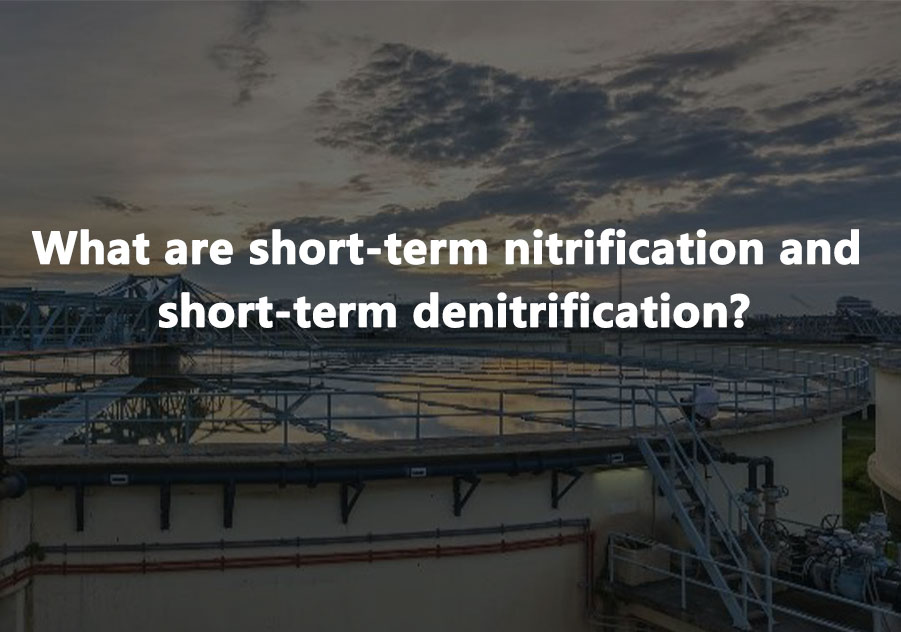 +86-15267462807
+86-15267462807

In the field of biological denitrification, short-range nitrification and short-range denitrification are two important processes. They break through the traditional full-range nitrification and denitrification pathways and achieve efficient nitrogen removal by regulating the microbial community structure.
01 Short-term nitrification
Short-term nitrification refers to the process in which, during the biological denitrification process, ammonia nitrogen oxidation process is only carried out to the nitrite stage through specific process control means, that is, ammonia nitrogen (NH₄⁺) is first oxidized to nitrite (NO₂⁻), and nitrite is no longer further oxidized to nitrate (NO₃⁻). This process mainly depends on the enhancement of the activity of ammonia oxidizing bacteria (AOB) and the effective inhibition of the activity of nitrifying bacteria (NOB). The advantage of short-term nitrification is that it reduces oxygen consumption and carbon source demand, reduces the load of the subsequent denitrification stage, and thus improves the denitrification efficiency of the entire system.
Influencing factors and optimization strategies:
DO concentration: DO needs to be strictly controlled at 0.5-1.5 mg/L to inhibit nitrifying bacteria and benefit ammonia oxidizing bacteria.
Temperature and pH value: Suitable temperature (20-30℃) and neutral to weakly alkaline pH environment are conducive to the stable operation of
short-term nitrification.
SRT (sludge age): Appropriately shortening SRT is conducive to the selective cultivation of short-term nitrifying bacteria.
Influent load: Maintain a stable ammonia nitrogen load to avoid damage to the short-range nitrification system caused by shock.
02 Short-range denitrification
Short-range denitrification refers to the direct reduction of nitrate or nitrite to nitrogen gas (N₂), skipping the step of reducing NO₃⁻ to NO₂⁻ in the conventional denitrification process. This process usually requires special denitrifying bacteria that can directly use nitrite as an electron acceptor for denitrification reaction in anoxic environment. Short-range denitrification can not only avoid the intermediate product - nitric oxide (NO) produced in the traditional denitrification process, reducing environmental pressure, but also improve the total nitrogen removal rate and save the input of organic carbon source.
Influencing factors and optimization strategies:
Anoxic environment: Strict anoxic conditions are the basis of short-range denitrification, and DO should be controlled below 0.5 mg/L.
pH value: pH between 6.0-8.0 is conducive to the growth and activity of short-range denitrifying bacteria.
Temperature: Suitable temperature (20-30℃) helps to increase the denitrification rate.
Carbon source type and supply: select easily degradable and efficient carbon sources, and appropriately increase the carbon supply to promote short-range denitrification.
Flow state and mixing in the reactor: ensure uniform mixing in the reactor to avoid excessive oxygen concentration in local areas.
03How to regulate microbial communities to achieve short-term nitrification and denitrification?
Dissolved oxygen control: The realization of short-term nitrification depends on the inhibition of the activity of nitrifying bacteria (NOB). Usually, the dissolved oxygen concentration in the reactor is strictly controlled to maintain a low level that can ensure the normal operation of ammonia oxidizing bacteria (AOB) and inhibit the growth of NOB.
Temperature and pH regulation: Different microbial populations have different adaptability to environmental conditions. By adjusting the temperature and pH value of the reactor, the activity of the target bacterial community can be selectively promoted. For example, some specific AOB can have higher activity at lower temperatures or within a specific pH range.
SRT (sludge age) and HRT (hydraulic retention time) optimization: Reasonable setting of the sludge age and hydraulic retention time of the bioreactor can help to selectively enrich AOB while eliminating or inhibiting the proliferation of NOB.
Alternating aeration and anoxic treatment: Use intermittent aeration or segmented treatment to create environmental conditions that are conducive to short-term nitrification and short-term denitrification. For example, first convert ammonia nitrogen to nitrite under aerobic conditions, and then quickly switch to anoxic or anaerobic conditions so that nitrite is directly reduced to nitrogen.
Adding inhibitors: Certain chemicals can be used as inhibitors of NOB, such as methanol, isopropanol, etc., which can effectively inhibit the activity of NOB, thereby achieving short-term nitrification.
Carbon source addition strategy: Appropriate carbon source addition can regulate the denitrification process, so that nitrite is used as an electron acceptor before nitrate, achieving short-term denitrification.
In summary, through a series of precise process control methods, short-term nitrification and short-term denitrification processes can be successfully induced and stably operated in sewage treatment systems, thereby improving denitrification efficiency, reducing energy consumption, and reducing by-product generation.